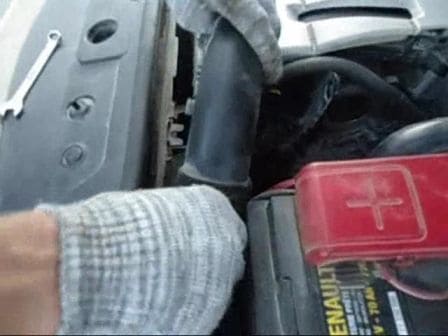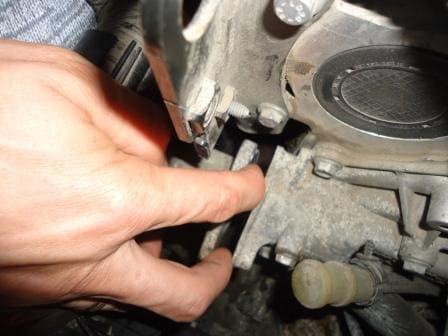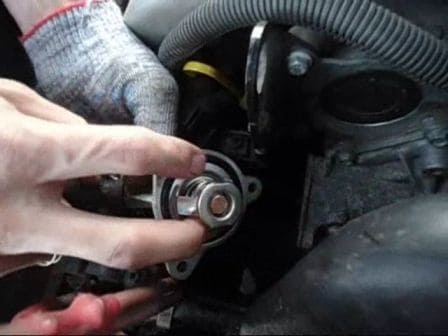The thermostat in the engine cooling system is used to quickly warm up the engine to operating temperature
At low ambient temperatures, the thermostat keeps the engine at operating temperature, resulting in less heat loss.
The thermostat is a thermal valve that blocks the passage of fluid through the radiator.
As soon as the fluid in the engine reaches a certain temperature, in the F4R engine it is 89˚ C, the thermostat valve begins to slowly open and the fluid begins to circulate through the radiator.
When the temperature reaches 99˚± 2 C, the thermostat valve opens fully.
Thermostat failures can occur in case of oxidation of the working parts of the valve, scale deposits.
In this case, the thermostat valve can be stuck both in the open position and in the closed position.
When stuck open, the engine will take a long time to warm up.
The interior heater will not warm up the interior in winter.
If the thermostat valve is stuck in the closed position, the engine may overheat, in which case the hot liquid does not circulate through the radiator, as a result, the radiator fan does not work, since the switch-on sensor is installed on a large circle of circulation of the engine cooling liquid.
To replace the thermostat, we install the car on an inspection ditch or lift.
Replacing the thermostat should be done when the engine is cold so as not to burn yourself.
Disconnect the negative battery terminal.
To approach the thermostat, remove the air duct (Fig. 1)

We substitute a container for draining the cooling liquid under the thermostat housing (you can use a cut plastic bottle of 2 liters).
With a ring wrench or a 10 head, unscrew the three bolts securing the thermostat housing (Fig. 2)

Remove part of the thermostat housing (Fig. 3)

Replacing the thermostat (Fig. 4)

We install all the parts in place and fill the coolant into the expansion tank.
The coolant level should be above the min mark (about halfway between min and max).
Checking the operation of the thermostat. We start the engine and set the speed to about 1500 -1.
The upper radiator hose should be hot when the thermostat activates. We monitor the engine temperature readings.
If the radiator fan is running and the upper radiator hose is hot, this indicates that our thermostat has opened.
Check the coolant level again.
{youtube}rVO0dMiRVCo|490/450/1{/youtube}










